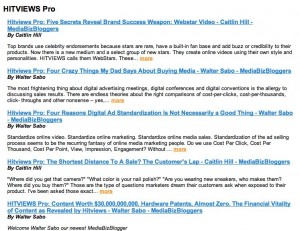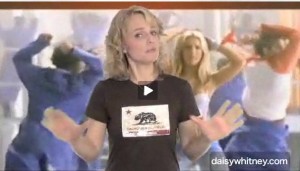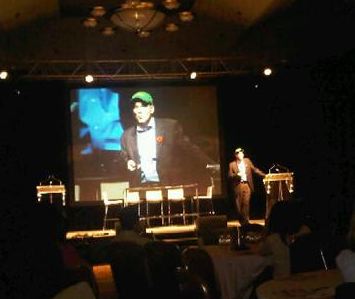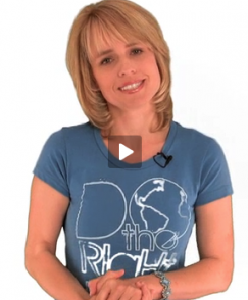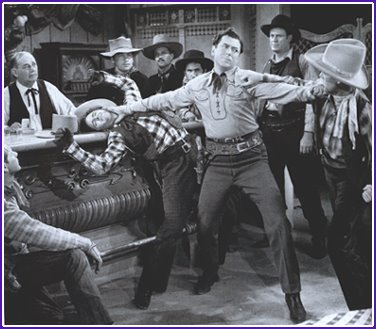As Hannibal used to say on A-Team, “I love it when a plan comes together.”

One of the most rewarding things about participating in online-video campaigns for big brands or network shows is seeing these launch simultaneously with television and print advertisements. We call it “integrated marketing,” and it’s easy in concept and difficult but wonderful in fruition. Okay, I like the payments better, but integrated marketing is still rare enough to be a pleasant surprise… especially when it involves “new media” and social. Of course, it’s difficult for a marketer or agency to time precisely a campaign’s “peak” in various mediums, given paid “insertion orders” (formal booking of space in media) often requires months of lead time. Likewise the “books” (magazines) can require months of advance notice.
I noticed that our YouTube GE Healthymagination campaign was timed well with a series of television spots, and most recently I’ve seen it on BBC America’s launch of Dr. Who (my video below was titled “Time Travel Fail, “What Year Do You Miss,” and “What Would You Do if You Had a Time Machine?” (thanks munchvids for the video response… it’s sad that those don’t get more real estate when the video plays).
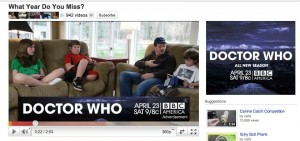
I wasn’t the only part of this campaign, and I’m writing this without any inside knowledge of the agency, budget, timing or execution. Hats of to MysteryGuitarman for this epic video that was also part of the campaign. I’m especially impressed that he found a “rotary pay phone” and managed to add a LED screen. And Joe, it’s making me crazy that you’ve managed to multiply yourself with better special effects than I see in most movies (Freaky Friday, Multiplicity). Vsauce’s video actually made me think, and TheStation participated with “Waiter Takes Out Restaurant.” Check out the whole series (a link to YouTube videos tagged ifIHadaTimemachine, then ranked by views).
The very week these YouTube videos launched, I noticed a prime print advertisement in Entertainment Weekly, a NYC “out of home” component,” and some “earned” media uptake (PR). Furthermore, the YouTube “branded entertainment” video series were wrapped with display and InVideo ads.
I like these “organic” YouTube campaigns that don’t force the brand in the webstar’s videos, but let the creator carry the campaign theme in their own way. The comments I’ve read are largely positive (a contrast from campaigns that require sponsored YouTube videos to have a branded slate at the intro, which is so forceful as to scare people away).
What can producers, networks, agencies and YouTube do to make these campaigns work even harder? A few ideas, but they all have executional nuances so it’s a bit unfair for me to “Monday morning quarterback.” Again- I know nothing more than what I’ve seen as a Dr. Who fan (and the very simple directions got via YouTube to make my video).
- Cross-link the videos so Dr. Who fans (I know you’re out there because many of you noticed the picture on my son Charlie’s shirt) would be able to move through them without having to leave YouTube (only a few percent of people leave a YouTube session for an ad, and that’s when there’s a strong reason).
- I would suggest the digital agency also run paid-search ads for related keywords (even though I doubt there are loads of people searching “time machine” and “ifihadatimemachine” the cost of that inventory would be minimal). I’d certainly be buying ads for those people searching for “Dr Who, BBC America” and related terms, which would help get more eyes on the campaign website: “TimeMachineTales.” Buzz drives search, and it’s a shame to see Amazon books rank higher than the 2011 version of the timeless show.
- Take advantage of YouTube’s “live” programming to augment the April 23 premier with something real time (perhaps one of the webstars watches the debut and invites interaction with fellow fans). If MysteryGuitarMan said he was going live on YouTube on the evening of April 23, I imagine hundreds of thousand would follow.
- Recognize that the YouTube aspect of the campaign is valuable far beyond the campaign. For instance, my Fringe promotions have accumulated significant views long after the debut. There’s a perpetual nature to these programs. As Hitviews CEO Walter Sabo says, “Campaign Duration: Forever.” The 105 videos his company has delivered for brands have accumulated in excess of 30 million views.
- Finally the real way to “break the fourth wall” is to allow a television show’s cast to interact and collaborate with prominent YouTube creators. This can be difficult, but possible. In the case of my “Meet the Fringe Cast” video, I simply learned the cast was at ComicCon, and I convinced the sponsor (Fox) to allow me the same access the network/producers gave to professional media. In another example, we saw V’s “Anna” (Morena Baccarin) appear on YouTube’s homepage with a custom message for YouTubers, and that was a “bar raising” move. Now imagine iJustine mingling with Mark Sheppard, which would carry as much weight as a local media tour to promote the show. iCarly’s Freddy Benson (Nathan Cress) met with YouTube’s prolific “ShayCarl/Shaytards” in a casual meeting that I would have paid to facilitate if I was Cress’ manager or iCarly’s promoter.
- Lastly, and this is really difficult, it would be great to find ways to permit clips from the show intermixed with the YouTube videos. For very good reasons this is rare. Often the network promoting the show doesn’t have the rights to use the content in promotion. The benefit, however, is you can give people a contextual teaser of the show’s actual content… as I did with “Fringe is Scary.” These clips were approved by the producer (JJ Abrams’ Bad Robot) for use with media, and I even snuck in some very tiny snippets beyond those in the media library.

I’m sure it was not part of the campaign that Elisabeth Sladen died this week (she’s the British actress who played intrepid investigative journalist Sarah Jane Smith throughout the classic BBC series’ 30-year run). But only one Guy calls those shots, and he’s not much of a marketer (thank God).



